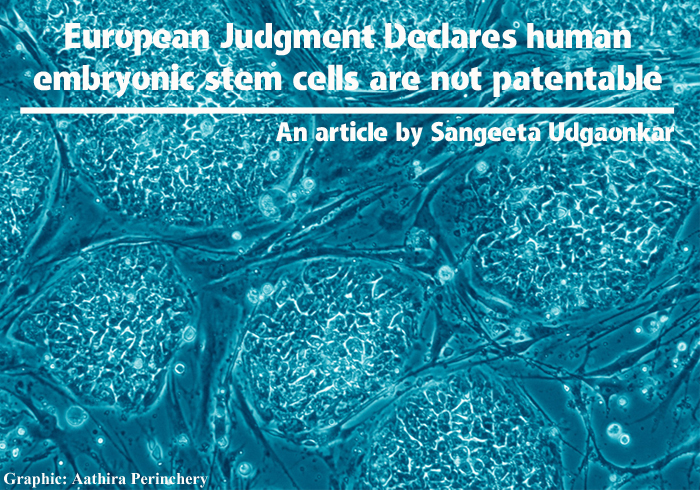European judgment declares human embryonic stem cells are not patentable
The recent judgment of the Court of Justice of the European Union in the case of Brüstle vs Greenpeace has examined the patentability of human embryonic stem cells. At the heart of the issue is the question whether an invention that destroys a human embryo can be granted a patent.
The TRIPS Agreement is an international agreement that provides common minimum standards for the protection of intellectual property. Under the TRIPS Agreement, a country can prohibit patents in the interests of "ordre public and morality". The European Union has expanded on this phrase in its Biotechnology Directive of 1998. Under the Directive, the "uses of human embryos for industrial or commercial purposes" is not patentable.
In Brüstle vs Greenpeace, a patent on stem cells was challenged under this provision. The European Court was asked to decide 3 questions: The meaning of the term "human embryo"; whether the term "industrial or commercial purposes" includes scientific research; and whether the prohibition on patents would apply if the use of human embryos was not a part of the actual invention but was a necessary precondition for it (for example, a stem cell made by using a human embryonic stem cell line as the base material, not human embryos themselves).
In its judgment, the Court said that any human ovum must be regarded as a "human embryo" as soon as it is fertilized. The reason for this is that, upon fertilization, it is capable of commencing the process of development of a human being. For the same reason, even a non-fertilized human ovum into which a nucleus from a mature human cell has been transplanted (as is done in cloning) is a "human embryo". Similarly, a non-fertilized human ovum whose division and further development have been stimulated by parthenogenesis is also a "human embryo". With reference to stem cells that have been obtained from a human embryo at the blastocyst stage, the Court felt that such a stem cell may itself fall into the category of "human embryo", depending on scientific developments, if it is capable of commencing the process of development into a human being.
As regards the second question, the Court held that the phrase "industrial or commercial purposes" covers the use of human embryos for scientific research which constitutes the subject-matter of a patent application. The research cannot be separated from the patent itself. However, any use for therapeutic or diagnostic purposes which is applied to the human embryo and is useful to it can be patented.
In respect of the third question the Court held that if the subject-matter of the patent application requires the prior destruction of human embryos at any stage, such as for the base material needed for the invention, no patent can be granted.
The Court has thus said that no patent can be granted on any invention that involves the destruction at any stage of a human embryo. A patent can be granted if a human embryo is benefited, not if it is harmed. Accordingly, no patent can be granted in Europe on human embryonic stem cells, or on any research using such stem cells.
The Indian Patent Office has granted a number of patents based on human embryonic stem cells. Many more applications are pending. Whether they will be successful depends upon how the phrase "ordre public and morality" that appears in the Indian Patent Act is interpreted by the Indian Patent Office and the Indian Courts in the future.


Comments
Post new comment